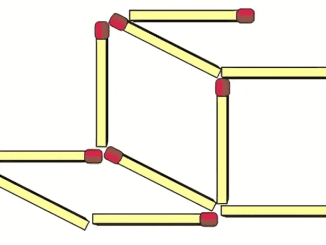It started on farms, but now it’s knocking on our doors. The bird flu, known scientifically as H5N1, has already infected over a thousand dairy herds, caused the death or culling of more than 168 million poultry worldwide, and jumped to over 70 humans in the U.S. The threat is no longer distant. Experts warn it could become the next big public health emergency — unless we act quickly.
📉 Why Should You Worry? This Virus Is Evolving Fast

Here’s the deal: viruses aren’t just stagnant germs. They’re shape-shifters. When two viruses infect the same host, they can mix genes — like shuffling a dangerous deck of cards — creating a potentially deadlier strain.
Right now, H5N1 is spreading not only through poultry but also dairy cattle. That’s a huge red flag. Cows were never part of the bird flu equation before. Even more worrying? Infected cattle show few symptoms, making it easier for the virus to move silently across states.
🧬 Top Virologists Are Raising the Red Flag
Some of the world’s leading virologists aren’t sugarcoating the danger. Dr. Peter Palese, a pioneer in influenza research, warns that our surveillance systems are “too weak” and that many farm workers lack basic protective gear.
Meanwhile, Dr. Ab Osterhaus notes the increased spread of the virus among mammals, which may be one of the final steps before H5N1 becomes more contagious between humans.
“We have a narrow window,” they say. “If we don’t interrupt this cycle now — in animals and people — we’re inviting disaster.”
Video : Bird Flu in Cows?! H5N1 isn’t just a poultry problem
🧪 Vaccines Exist — But There’s a Catch
Yes, the U.S. has a stockpile of about 20 million bird flu vaccine doses. Moderna even received a hefty contract to develop a specific H5N1 vaccine. But here’s the twist — reports now suggest that contract could be canceled.
Meanwhile, the government’s pandemic preparedness office is underfunded and understaffed. And until late last year, testing of farm workers and cattle was strictly voluntary. That’s like putting a seatbelt on after the crash.
Today, only cattle moving across state lines must be tested. In-state spread? Still flying under the radar.
😷 Human Cases Are Climbing — And So Are Questions
Seventy-plus human cases have already been confirmed in 14 U.S. states. While most were mild and involved farm workers, some are more troubling.
A toddler in California? An adult in Missouri? Neither had known contact with infected animals — yet they tested positive. Even more chilling: the first U.S. fatality occurred in Louisiana earlier this year, involving a man who was exposed to backyard chickens. Genetic testing showed that the virus was mutating inside his body.
That’s the nightmare scenario scientists fear — a virus that’s learning how to become more dangerous to humans.
🐖 Not Just Birds Anymore: Pigs, Raw Milk, and Wildlife Are Now Involved

This outbreak is branching out like a bad horror movie script. H5N1 has now been detected in pigs — animals that can carry both bird and human flu viruses. These animals act as genetic “blenders,” capable of creating new flu strains that could spread rapidly among people.
More than 400 wild animals — from raccoons to seals — have tested positive too, likely after eating infected birds.
Even worse? H5N1 has been found in raw, unpasteurized milk. If consumed, it could potentially become another route of infection. The USDA is now requiring producers to submit milk samples for testing, but it may be too little, too late in some areas.
📍 Surveillance Is Falling Behind — And That’s a Huge Problem
Let’s look at the numbers:
- 1,031 dairy herds in 17 states infected
- Over 12,875 poultry and wild flocks affected
- Detected in 60 wastewater sites — 80% positivity in Iowa and California
Experts from the World Health Organization have slammed the current response, calling it an outbreak “unfolding in slow motion.” We’ve seen this movie before — and it doesn’t end well without action.
💉 Is There Any Hope? Yes — But We Must Move Fast
Despite the bleak headlines, there is good news. The U.S. can scale vaccine production to 100 million doses if needed. Antivirals like Tamiflu are proven effective against this strain and are already in circulation. Researchers are even developing experimental vaccines for poultry.
Video : Growing concerns about bird flu cases in U.S. farm animals and risk to humans
Also, recent tests suggest that some human antivirals work in infected cattle, offering a unique tool to contain the outbreak at its source.
But all of that only works if we act fast. Hope doesn’t stop pandemics — preparation does.
🔚 What Now? Time Is Running Out to Stop the Spread
Here’s the bottom line: H5N1 isn’t a future threat. It’s already here — evolving, mutating, and testing our limits.
We’ve been through this kind of crisis before. If we’ve learned anything from COVID-19, it’s that delay is deadly. Swift action could mean the difference between isolated outbreaks and a global catastrophe.
We must:
- Expand surveillance in livestock and wastewater
- Protect farm workers with equipment and education
- Speed up vaccine production and distribution
- Crack down on raw milk contamination
- Enforce stricter testing and tracing policies across states
Because the clock is ticking. And unlike fiction, this virus doesn’t wait for a hero.


